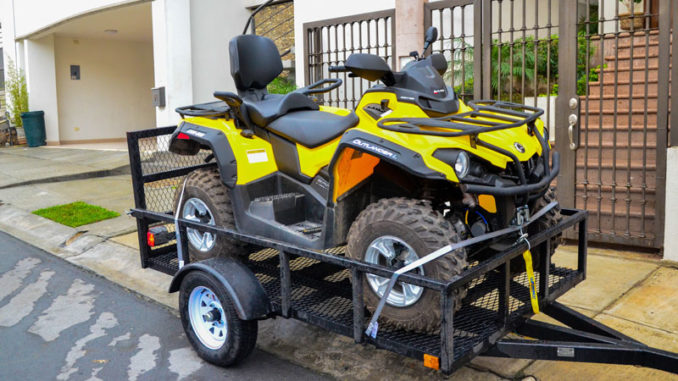
Sportsmen love their toys. We spend a fortune on trucks, boats, ATV’s, UTV’s and the trailers to haul them. Insurance is one of the best ways to protect these investments in the event something goes wrong. But what is actually covered by insurance? Let’s look at some scenarios to help figure it out, because the last thing you want to do is find out you are not covered when you need it the most.
Generally, liability coverage provides insurance coverage for you or anyone driving your vehicle, boat, ATV, etc. with your permission, except anyone who is specifically excluded from coverage. Liability insurance is intended to protect others from some harm you accidentally caused. Your liability insurance will not pay for your damage!
Liability policy
Liability coverage will only pay up to the amount of the policy. If you have a 50/100/25 policy, that means the insurance company will pay up to $50,000.00 per accident to any one person who makes a claim.
The insurance company will pay up to $100,000.00 per accident, no matter how many people are involved in the accident. For instance, let’s say 4 people make claims under the policy. The insurer will pay up to $100,000.00 total to resolve all four claims, no matter how much the claims are worth. In this case, the claimants will have to split up the $100,000.00.
How they do that will depend on the nature of their claims.
Under the 50/100/25 policy scenario, an insurer will pay up to $25,000.00 for property damage claims made by others, not the insured.
Comprehensive coverage
Comprehensive/collision coverage means that the insurer will pay damages up to the amount of the policy limits for damages caused by fire, theft, hail, flood, etc.
If you accidentally damage your vehicle/boat/ATV, the insurer will pay damages up to the amount of the policy to repair the vehicle. If the repairs exceed the cost of repairing the vehicle, they may pay to “total” the vehicle.
However, regardless of the value of the vehicle, the insurer will only pay up to the policy limits. The insurance company will only pay the fair market value of the vehicle, regardless how much you think the vehicle is worth to you. Custom rims, stereo, lifts, electronics, etc. generally do not substantially increase the value of the vehicle/boat/ATV.
Some insurance companies offer additional policies for add-ons and upgrades to insured vehicles. It’s a great idea to keep receipts and take photos of upgrades, so at least you can substantiate your claim for upgrade costs.
Your vehicle insurance will not cover damages to a trailered vehicle that you own if you caused the damages. Let’s say you are trailering your boat and you accidentally hit another vehicle with the boat. Your automobile liability insurance will cover the damages you caused to the other vehicle, but not the damages to your boat.
You will have to rely on your comprehensive/collision coverage to fix your boat under that scenario.
If you own an ATV and think your homeowner’s policy will always protect you, think again. A homeowner’s policy has specific exclusions to ATV coverage. Some homeowner’s insurance policies only cover claims for accidents that occur on the homeowner’s property.
If you haul your ATV to the camp, it may not be covered by your homeowner’s policy. The best way to ensure coverage is to have a separate liability/comprehensive/collision policy on ATV’s and UTV’s. Sometimes the value of a bike does not justify the cost of a comprehensive policy, but liability coverage is a must-have if you let others borrow your bike or you ride a lot around others.
Hunting lease insurance
Hunting lease insurance is required by most landowners. They want to be protected in the event of an accident while on the property, and they want the people leasing the property to pay for it. Most hunting lease liability policies name the property owner as an “additional insured” under the policy.
It is very important to note that many hunting lease policies EXCLUDE all members from coverage if a member is injured while on the lease. That is, many times the policy only provides coverage to guests or others lawfully on the property at the time of the event causing damage or injury.
For instance, if you are a member of a club and you are injured when your stand collapses. Your policy might exclude you from coverage because you are a member of the club. But if you have a guest who is injured in the same incident, the guest can make a claim under the club’s policy.
Know what is covered
The purpose of this article to encourage you to examine your insurance coverage so that you know what is covered and what is not covered. The very last thing you want is to find out that you thought you had coverage and you don’t.
It can be devastating to find out after an accident that you have been paying for insurance that doesn’t provide the coverage you thought it did. Since the policy language in each policy can vary widely, it is best to read your policies.
If you have any questions, go to your insurance broker/agent and ask them to clarify any questions you have and to show you in the policy where you are covered or not covered.
About the author: John H Smith is an experienced trial attorney. Growing up in Houma, Louisiana, molded an avid outdoorsman. He now lives in St. Amant and works out of his office in Baton Rouge. A personal injury attorney, John’s law firm has a superlative record representing those requiring legal assistance, redressing any number of civil wrongs committed against their life, limb or property. Visit www.smithshanklin.com to learn more.